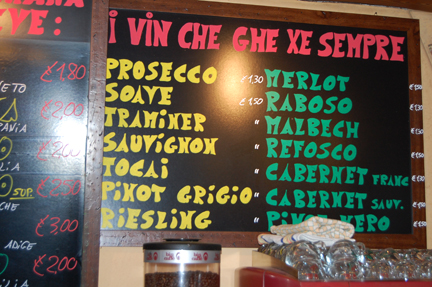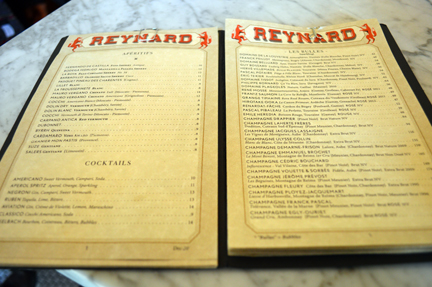
Tips for Ordering Wine at a Restuarant
Last week’s post “Can a sommelier be trusted?” turned out to be more polarizing that I imagined.
It was retweeted and shared on Facebook by numerous wine professionals, many of whom thanked me for writing it.
At the same time, a number of readers commented (on various social media platforms) that my notes on Sullivan’s article were “ill-tempered” (as one Twitter user wrote).
I appreciate it greatly when people share their impressions of what we post — negative and positive — and I’m grateful for all the people who took time out to read it.
I would like to underline that the opinions and views espoused here are my own and not necessarily those of the Boulder Wine Merchant. Owner Brett Zimmerman has been wonderful in giving me a free hand to write a real blog. But ultimately, I am the editor and writer.
In the wake of last week’s controversial post, I wanted to share these no-nonsense rules-of-thumb for ordering wine at a restaurant in the US today.

Have Reasonable Expectations
Don’t expect fine-wine service at Applebee’s. You won’t get it. It’s for the “Chard-Cab-Merlot-Malbec” crowd. Look for superior wine service in restaurants that offer it, and be tolerant when your server at your favorite Tex-Mex pours you a corked “Napa Cab” (just politely inform her/him and request a new bottle).
Do Your Homework
Look at the wine list online if it’s available. This is the best way to prepare for any fine-wine experience (I do this all the time). And when you’re heading to a high-profile restaurant, look around online for a profile of the wine director. It’s a great way to learn about the sommelier’s interests and her/his list’s focus.
Reflect on What You Want to Drink
One of the biggest issues for diners and sommeliers alike is that many guests don’t know what they want to drink. Don’t be afraid to tell the sommelier what kind of wine you like (oaky, buttery Chardonnay? low-alcohol, traditional-style Nebbiolo?), and if you don’t see any familiar wines on the list, ask the sommelier to pour you a taste of something she/he thinks you might like. That’s part of what by-the-glass programs are for: Most sommeliers will be happy to “taste you on” a wine before serving it.

Set Your Price Ceiling Before You Arrive at the Restaurant
Never be embarrassed to tell a sommelier how much you’d like to spend (I do this all the time as well). And don’t forget that tax and gratuity need to be figured into the total bill.
Don’t Be Afraid to Question the Fitness of a Wine
This is one of the stickiest subjects in fine-wine service. Any sommelier who reacts rudely to a question of fitness shouldn’t be in the business. Even when the guest is wrong about the “correctness” of a given wine, there’s no excuse for rudeness.
Remember: Sommeliers are People Too
This is probably the most important element in a great restaurant experience. Think of your sommelier not as your servant, but as your dance partner. When you walk into a restaurant for the first time, the sommelier knows nothing about you (while you may know something about him). She/he has to gauge her/his approach to your table on your appearance and attitude. Just like a dance partner, your demeanor gives her clues as to what wine will work at your table.
Fine Dining is a Wager, Not a Science
I go out to eat a lot. And I eat in high-concept restaurants all over the country and in Europe. Fine dining is part of my livelihood and is accounted for in my yearly budget.
And I’ll be the first to tell you that any given restaurant can have a bad night. And the same holds for wine to an even greater extent: Wine can be fragile and unpredictable, and as it evolves in the bottle, it can change radically. Sometimes things just don’t work out the way you or your sommelier planned.
But when they do work out just right, it can be one of the most magical experiences of a lifetime. That’s the fun of it all.
Jeremy Parzen
follow Jeremy @DoBianchi